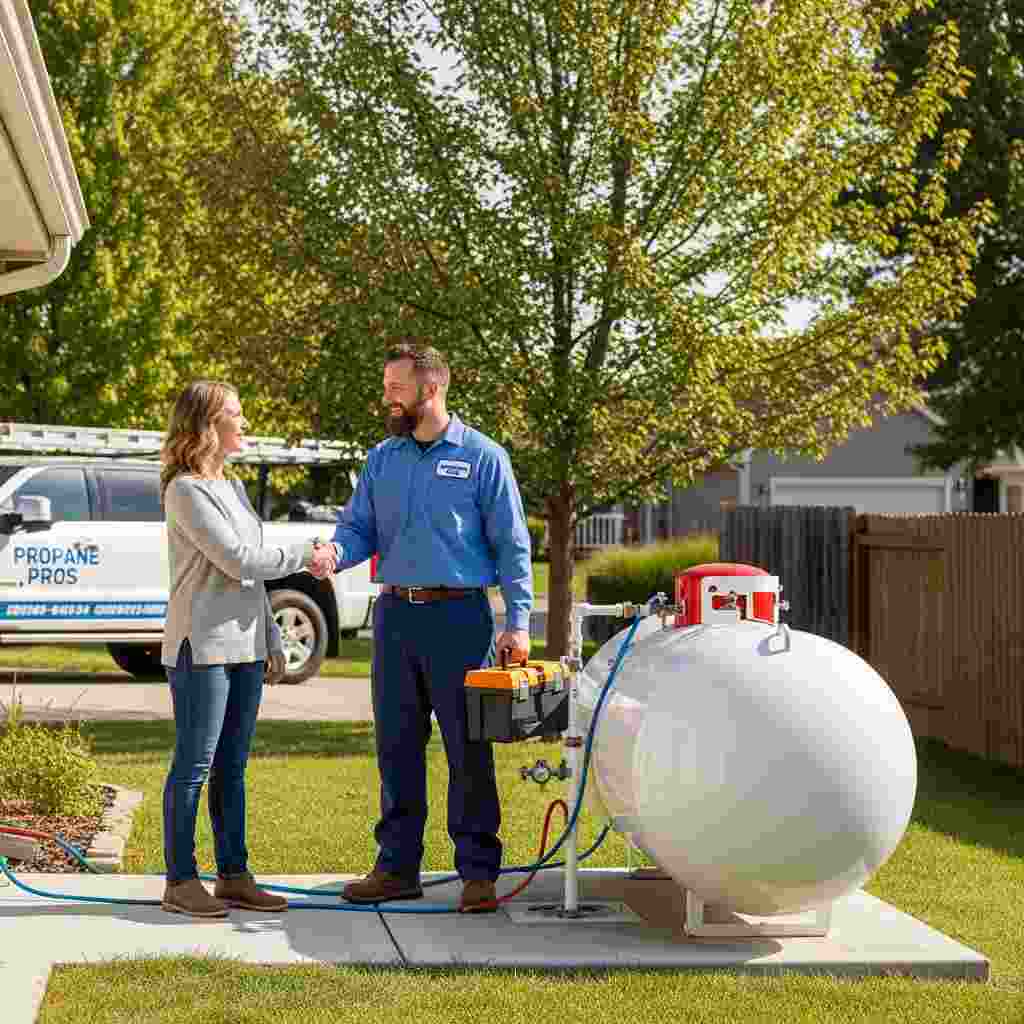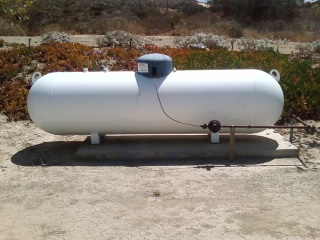
Propane is a handy fuel. You can use it to heat your home, cook meals, run a backup generator, or warm up a pool. More families and small businesses pick propane because it burns clean, is easy to get, and works even where natural gas lines don’t go.
But there’s one part of using propane that you can’t take lightly: installing the tank. This is not like hooking up a grill or plugging in a toaster. A propane tank stores a flammable gas under pressure. It needs to be set up the right way, with the right tools and permits.
In this post, I’ll explain why hiring a pro to install your propane tank keeps you safe, keeps the law happy, and saves you trouble later on.
The Risks of DIY Propane Tank Installation
You might think you can install a propane tank yourself if you’re handy. How hard could it be to place a tank and hook up a hose? The truth is, doing it yourself is risky.
Propane is very flammable. A leak from a loose valve or a poor connection can put you and your family in danger. There are strict safety rules that say how far a propane tank must be from buildings, property lines, and anything that could set it on fire.
When you try to do it yourself, it’s easy to miss one of these rules and create a hazard.
There are other hidden problems too. A poorly installed tank can leak slowly. Gas can build up under your house or in the ground. You might not notice until you smell a rotten‑egg odor or see frost on the tank.
If the tank isn’t tied down right, it can move during a storm or flood. That can bend or break the gas lines, causing an even bigger leak.
Burying a tank without the right coatings or vents is especially risky because the tank can corrode and leak underground.
Safety Is More Than Common Sense
Professional propane installers don’t just set a tank and walk away. They follow a national code that explains how to store and handle propane. A big part of that code is about where to put the tank.
Tanks between 125 and 500 gallons need to be at least ten feet away from any building or property line. Tanks that hold 1,000 to 2,000 gallons should be twenty‑five feet away. Even tanks buried in the ground need to be vented and far enough from other things so that gas can’t gather around them.
Pros also look at the ground and nearby things. They know that tree roots, soft soil, or slopes can cause problems later. For example, if you bury a tank too close to trees, the roots could press against it. If you put it on a slope that erodes, the tank might shift and break the gas line.
Certified installers make sure shut‑off valves and regulators are easy to reach in case of an emergency. Safety isn’t just about common sense. It’s about knowing the rules and using the right gear.
Legal Matters and Insurance
Another part of a safe installation that many people forget is getting the right permits. Your local government usually requires permits before you put in a propane tank.
These permits make sure you follow safety rules, zoning laws, and environmental guidelines. If you skip the permit, you could face fines, be forced to remove the tank, or run into trouble with your insurance company. Permits show that someone with a license checked the plan and made sure the tank will be in the right spot.
Your home insurance policy might also have rules about propane. Many insurers require gas appliances and fuel systems to be installed and maintained by licensed pros.
If you try to do it yourself and there’s a fire or explosion, the insurance company could refuse to pay for damages. Even if nothing goes wrong, a do‑it‑yourself installation may not pass inspection when you sell your home.
Having a pro do the work keeps your property value and your legal standing safe.
What to Expect When You Hire a Pro
When you choose a certified installer, you get more than someone to drop off a tank. A professional will walk you through the whole job. They start with a site survey to figure out how much propane you need and where the tank should go.
They look for hazards like buried utility lines or low spots that collect water. They also help you pick the right tank size and type—above ground or underground.
After the survey, they get the permits you need. They prepare the site, which might mean pouring a concrete slab for an above‑ground tank or digging a hole for an underground tank.
On the day of installation, you should be at home. The crew will need to get inside to connect your appliances. They’ll set the tank, connect it to your gas system, install shut‑off valves, and test for leaks.
They’ll also teach you how to read the gauge, what to do if you smell gas, and when to call for refills. Some companies even offer wireless monitors that tell them when your tank is running low so they can schedule a delivery before you run out.
Balancing Cost and Value
It’s normal to worry about how much it costs to have a professional install your propane tank. There are fees for permits, labor, and materials like concrete pads or special coatings.
Underground tanks cost more because they need digging and extra permits. But they stay out of sight and are less likely to be damaged by weather. Above‑ground tanks are cheaper, but they need more space and might not be as nice to look at.
A certified installer will talk you through these choices. They can help you decide whether spending more now will save you money later. A tank that’s the right size means fewer refills and less wasted fuel. A system that follows all the rules is less likely to fail an inspection.
Fixing a failed inspection or moving a tank is expensive and stressful. Paying a pro to do it right the first time is often cheaper in the long run.
Perks of Working with Professionals
There are extra benefits to hiring a pro that you might not think about. Many propane companies now offer automatic tank monitoring. A small wireless sensor checks how much fuel is left and sends an alert when it’s time to fill up.
You don’t have to remember to check the gauge yourself. This is important if propane heats your house, cooks your food, or powers medical equipment. Running out of fuel could be a big problem.
A certified installer also helps you plan for the future. If you want to add a pool heater, an outdoor kitchen, or a standby generator later, they can make sure the tank and permits cover those items.
Working with one company for installation, delivery, and maintenance makes everything easier. If something goes wrong, you know exactly who to call.
Keep Safety at the Front
Propane is a dependable and flexible energy source, but only if you install and care for it the right way. Trying to set up a propane system yourself can lead to serious safety issues and legal troubles.
When you hire certified pros, you know they understand the safety codes, get the permits, and put the tank in the right spot. They also make sure you have the right size tank, handle inspections, and set up easy refill options.
If you’re thinking about using propane at home or at work, don’t take chances with the installation. Let licensed experts guide you through every step. Want more info on getting ready for installation, choosing the right tank size, or getting permits? Look at the other posts in this series.
Have questions or worries about your propane tank project? We’re here to help you find the right contractor and make sure your system is safe and legal. Contact us today to talk with a propane specialist and set up a site visit.

Mike is an experienced propane technician with over 15 years of professional experience in the field. He has dedicated his career to helping customers with their propane needs, from installation to maintenance and repair. Together with Jeremy, he co-founded this website to provide useful information and guidance to customers seeking reliable propane services.



